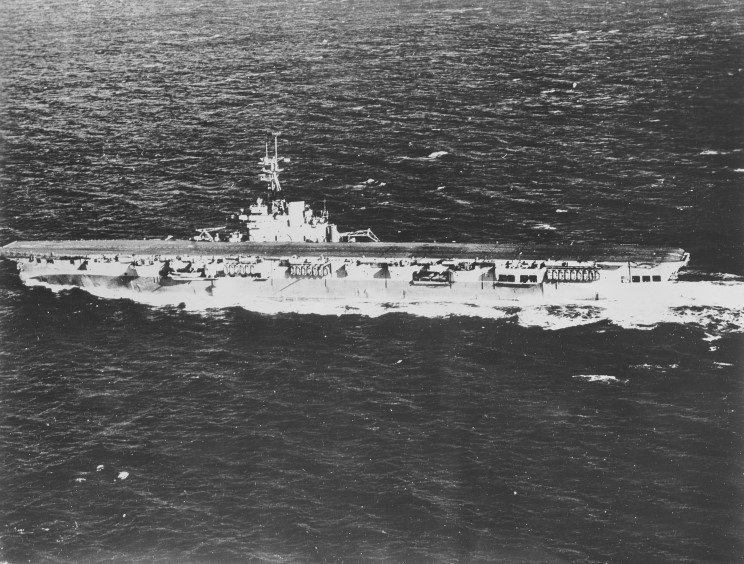
HMS Colossus conducting her speed trials in June 1940 - with the situation in Europe worsening many 'issues' were overlooked in the haste to bring her into service and several of them such as the steering faults where not rectified for several years.
One of the ‘ATL Riddles’ that occupies far too much of my brain activity is the pre WW2 choices that Britain made with regards to the choices of ships laid down in the late 30s and the decisions on total and individual ship tonnage limitations imposed by the need to conform to the various treaties in force at the time.
Principally among those was the choice to build the 3 illustrious class armoured carriers
Now I have no issues with the decision making that led to their design – Admiral Henderson as 3rd Sea Lord and Controller of the Navy during the mid 30s performed an amazing end run around the bureaucracy of the day to get those ships built and they served the Royal Navy and the British nation well.
However the decision to reduce the aircraft capacity of the design from an original intention for a similar double hanger space to that of HMS Ark Royal to a single hanger with half the capacity of the eventual design was driven by a desire to allow the Royal navy to operate 6 x 22.5 kiloton Fleet carriers with in the treaty agreed 135,000 ton limit rather than the 4 x 27 Kiloton + Ark Royal that the 2 hanger design would have allowed!
This then went on to set the max limits for carriers in the 1936 2nd LNT and I have always looked for a way to have allowed those carriers to have been built as the double hanger 4 shaft carriers that would have served the RN even better than OTL.
Now I had a bit of an epiphany today regarding this and it goes something like this:-
Admiral Henderson as per OTL recognises the need for armoured carriers to allow the RN to operate in littoral environments in range of twin and triple engine land based bombers i.e. the North Sea and the Med
However he decides that not all the carriers would be needed for such a mission
Therefore he decides to go ahead with the twin hanger, 4 shaft, armoured design of 27 kilo tons but limits the number of carriers to 3.

HMS Invincible after her commissioning during the last days of peace in the Summer of 1940 - note this picture was taken 3 days before Germany Invaded Czechoslovakia and 5 before Britain and France declared war (by which time Invincible had her first dazzle paint scheme)
He then rather cunningly comes up with a ‘1936’ Light fleet pattern aircraft carrier concept 6 years earlier than OTL similar to the Colossus and Majestic class – that is a single hanger unarmoured design of about 16 Kilotons, with a Town class cruiser machinery on 4 shafts - based loosely on the Illustrious design (minus the armoured box hanger and the 8 x twin 4.5” guns) intended to be built in a civilian yard. A slightly less Austere version of the

Harland and Wolff shipyards building 2 of the later light fleets in late 1940 and the first of the slightly larger Majestics*
This is intended to ultimately give the RN by 1941 the following 6 carriers - note weight is dry, aircraft capacity is given as the approximate hanger capacity for a 1936 type airgroup – and speed is design speed (HMS Ark Royal topped 31 knots in her 1938 acceptance sea trials)
HMS Ark Royal (22 Kilotons – 60 Aircraft – 30 knots)
HMS Illustrious (27 Kilotons – 60 Aircraft – 32.5 knots)
HMS Invincible (27 Kilotons – 60 Aircraft - 32.5 knots)
HMS Indomitable (27 Kilotons – 60 Aircraft - 32.5 knots)
HMS Colossus (16 Kilotons – 36 Aircraft – 31 knots)
HMS Glory (16 Kilotons – 36 Aircraft – 31 knots)
This uses up all 135 Kilotons of the allowed 135 Kilotons 2nd LNT Limit
The then intention of the remaining Carriers was as follows
HMS Argos was to be placed in reserve to be broken up once HMS Colossus in Commission
HMS Hermes was to be placed in reserve to be broken up once HMS Glory in Commission
HMS Eagle initially to become the training vessel but to then be 'demilitarised' and reclassified as a Imperial Aircraft Transport once HMS Furious takes over this role
HMS Conqueror decommissioned upon commissioning of HMS Invincible and reclassified as a aircraft maintenance vessel after refit
HMS Glorious decommissioned upon commissioning of HMS Illustrious and reclassified as a aircraft maintenance vessel after refit
HMS Furious decommissioned upon commissioning of HMS Indomitable and reclassified as a Training Vessel after a refit
Note: That the ultimate failure of the 2nd LNT in May 1937 followed by the German rejection of the Anglo German Naval Agreement in December the same year along with the worsening situation (ie Japan's invasion of China and the Italian atrocities in East Africa) which made these plans obsolete - along with concerns regarding the plans for refitting Conqueror and Glorious into Aircraft Maintenance vessels seen as breaking both the spirit and letter of the 2nd LNT led to these plans being suspended at the end of the year and later events obviously saw them permanently shelved and a further 3 Armoured carriers and 6 more of the light fleets ordered in 1938 with several more of the later light fleet 'Majestic' design being ordered later once the 2nd Great war had started.
*You are mistaken that's definitely not HMS Unicorn in the background.....its errr um HMS Eagle